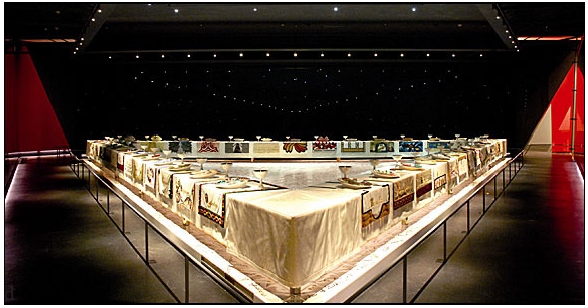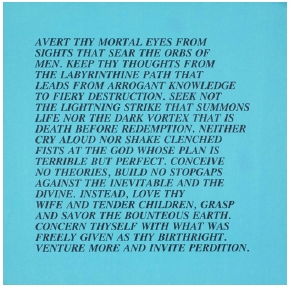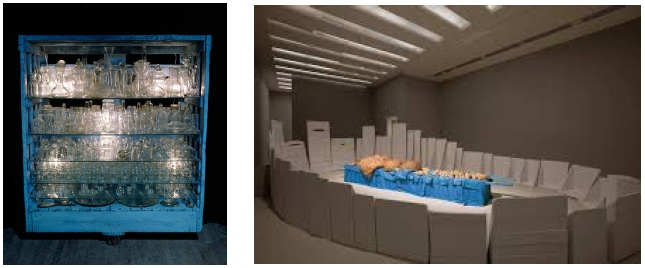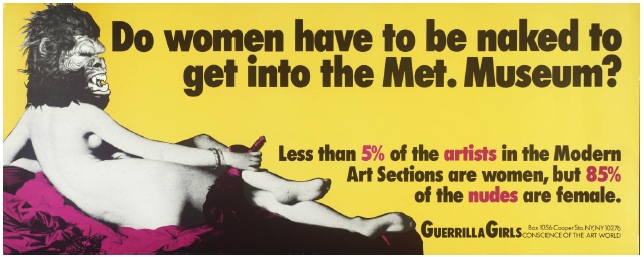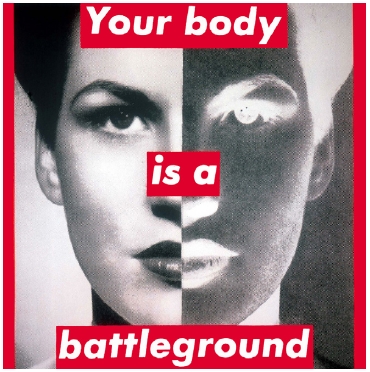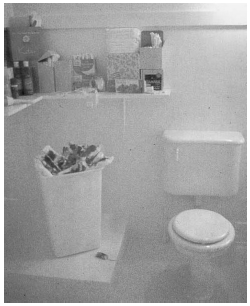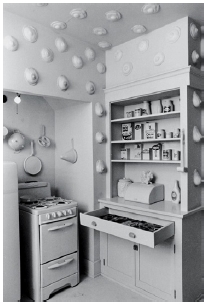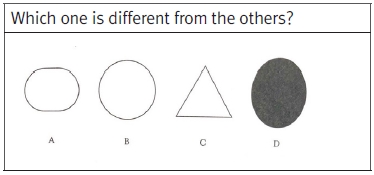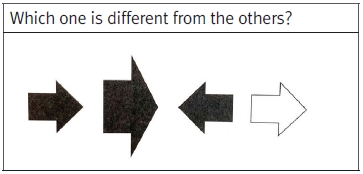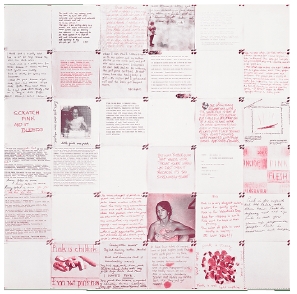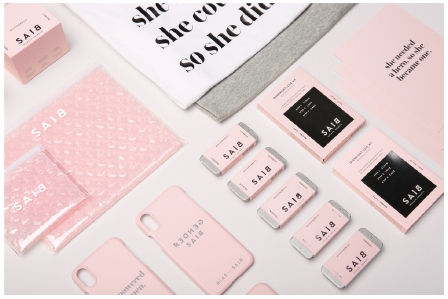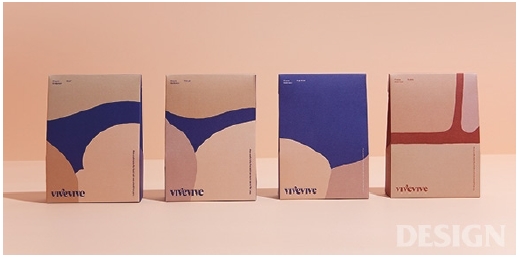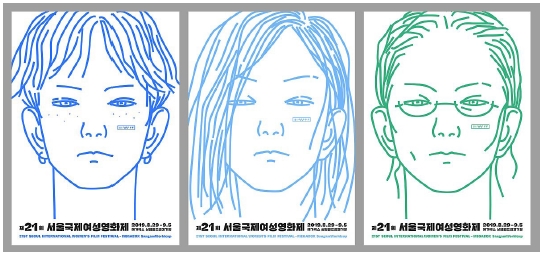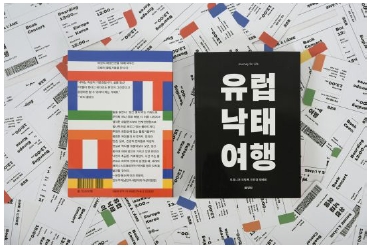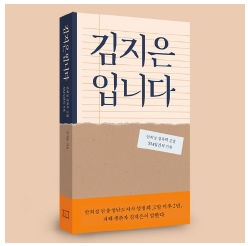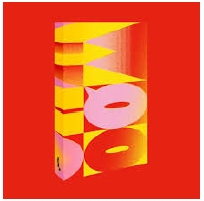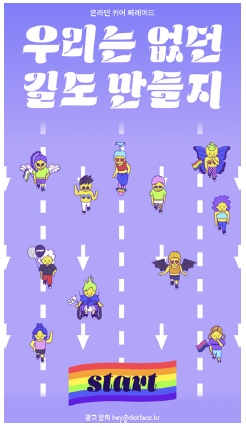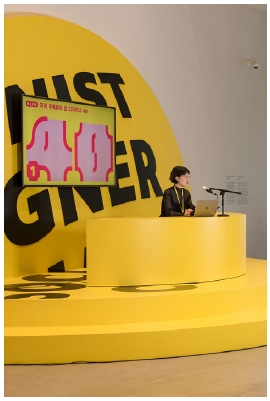
Korea Feminist Design Practice Analysis
Background This study analyzes the characteristics of South Korean feminist design practices. Since the feminist reboot of South Korea in 2015, the hashtag, “#sexual_violence_in_○○_field” movement that took place in the art and culture field in October 2016 became the momentum in which women designers’ voices were expressed as design practice. This study aims to prepare the framework to analyze this phenomenon of contemporary design practice.
Methods In an analysis of feminist design practice, to draw concrete results, this study limited the research scope to the graphic design, the design field to which the researcher belongs. This study investigates feminist art sharing the history and trend of British and American feminist design practices in the historic context. From the history of British and American feminist art and design practices, this study draws a perspective of criticism and the framework of analysis. This study analyzes the domestic feminist design criticism.
Results This study divided the types of classification according to content from the perspective of feminist design practice criticism into “political propaganda,” “emphasis of femininity,” and “deconstruction of dichotomy.” This study conducted an analysis, dividing the practices into: a practice as a ‘political propaganda’ to reflect women designers’ voices against inequality; a practice achieving the effect of subversion by clearly recognizing the difference between male and female and ‘emphasizing femininity’ or considering female users; and a practice attempting ‘the deconstruction of dichotomy’ inherent in the overall visual culture beyond the dichotomy between male and female. In addition, the potential of South Korean feminist design practices was categorized into: ‘design practice as an author;’ ‘design practice as solidarity;’ and ‘experiment on the possibility of media expansion’ to examine its characteristics.
Conclusions This study presented the potential of examples of the contemporary graphic design practices as feminist design practices. Hopefully, future researchers and designers would be able to achieve the chronology and insight on feminist design research and practice through this study.
Keywords:
Feminist Design, Design Practice, Archive, Design History1. Background and Purpose of Study
1. 1. Background of Study
Globally, post-feminism or fourth-wave feminism flow rises, responding to the diversity of women’s lives. The third-wave feminism from the 1990s through the early-and mid-2000s, third-wave feminism is characterized by the mutual acknowledgment of movements on various spectra under the premise that women’s lives cannot be described by a single representative agenda (The first wave is women’s suffrage movement, and the second wave is women’s liberation movement). The third-wave feminism began to produce feminist criticism discourses, actively forming intersectionality with other disciplines to respond to the diversity of women’s lives. Today, in the domestic feminism, too, beyond third-wave feminism, focused on net feminism, the voices paying attention to the diversity of the lives of women of all ranks and classes pour out like a flood online. Especially, through Megalia’s mirroring movement triggered in ‘MERS Gallery’ in 2015 and the murder case in Gangnam Station and a movement to define that as a misogyny hate crime in 2016, South Korean feminism had a new turning point.
The design field in a close relation with the value of human life and changes in social agenda affects and is affected by feminism that has recently been settled as a main value in Korean society. In 2017, in “Young generation pursuing sympathy and solidarity, spends money for feminism projects,” Joongang Ilbo shed light on the creators producing feminist contents through design and the expansion of the social bond of sympathy in feminism to the extent that it could form a market scale. The design field that reflects consumers’ needs, responding sensitively to the social flow produces feminist contents through various practices. For example, as pointed out by Gwen-jhir Kim (2018), this can be found in the phenomenon in which the design contents related to feminism has sharply increased for the recent three years since the mid-2016 on Tumblbug, a typical platform of producing design contents through user-oriented social crowdfunding. In Monthly Design, Min-Jeong Kim and Eun-Gyeong Jeon (2018) mentioned feminism as one of the design trend keywords of 2018 and predicted that this was an important phenomenon that would further be strengthened in the future Korean society, while in 2019, they reconfirmed the expansion of the base of feminism, pointing out the tendency of pursuing decentralized, radical diversity in Korean society as a trend keyword.
1. 2. Purpose
Domestic feminist design research was first published in 1993, and continuously more than two studies were published a year just since the 2000s. Like this, studies of domestic feminist design have a short history. And yet, since 2016, with the review and rapid growth of feminism, the necessity of research on the aspects of changes in design practices resonating in the social and cultural phenomena like these (Practice: covering works, products, practical achievements in the overall design project) has been raised. Thus, at the present point in time, it was judged that it would be necessary to conduct an analysis of Korea feminist design practices. For this purpose, this study would draw the perspective of British and American feminist art and design practice criticism to present the framework of analysis for the contemporary graphic design practices. This study aims to provide the base of research and work for researchers and designers in the future generation by probing the potential of the contemporary feminist design practices.
1. 3. Scope and Methods
The focus of this study is on an analysis of the domestic feminist design practices, so this study would precede with a review of British and American research and practice as a control group to interpret the characteristics of South Korean practices. The history of British and American feminist practices can be divided into three stages according to the aspects of development by period through 2018 starting from the 1850s when women with professional arts training appear. From the perspective of feminist criticism drawn from British and American feminist practices, this study introduces significant practices from the feminist criticism perspective of the contemporary graphic design practices since 2017.
2. Definition and Origin of Feminist design practices
2. 1. Definition of “feminist design”
Feminism is a movement overcoming exploitation and oppression based on sexism. “Feminist design” refers to the design behavior or design research attitude reconsidering the basic premise generalized by the existing male-centered view of the world from a feminist perspective. The correct term referring to the expressions, such as “a design from a feminism perspective,” “a design in a feminism tendency,” and “a design from the feminism awareness network,” mixed in the titles of previous studies in Korea, is “feminist design.” When feminism intervenes in a certain disciplinary discourse, it provides “a feminist perspective,” and the epistemological outcome of the discipline produced through this is “feminist (name of the discipline),” for example, feminist criticism and feminist archive.
According to Frichot (2016), aesthetic expression is fundamentally connected to ethical responsibility and in an inseparable relation with it. Feminism explains the relations among class, race, gender, and environment complexly intersected and allows us to understand and further be directly involved in the important social agenda we encounter. If ‘design’ is the whole process to problem-solving, design practice is a set of ethical choices at multiple levels. The feminist design practice discourse is significant in that it allows the thinking of the issue of ethical choices in the entire process of this design problem-solving from a feminist perspective.
2. 2. Origin of feminist design
Then, how did feminist design practice begin? The history of early feminist design is in an inseparable relation with the history of feminist art. Thus, Section 3.2. would investigate the historical flow of British and American feminist art. In the U.K. and the U.S., feminist art appeared responding to the demands of feminism of the times in the early 1970s. In art, feminism started from shedding light on the social meaning or role of the arts, connected with political movement for exposing sexual inequality and solving social problems and gradually headed for the problems of the works themselves.
Since Linda Nochlin’s argument, “Why there are no great female artists?” knocked on the door of feminist art in 1971, in art history, criticism, and practice, feminism has repeatedly been changed. Nochlin presented the inequality of the chances to get skills and knowledge to produce works of art compared to male artists as an answer to this question, instead of women’s lack of artistic talent. Like this, first generation feminist art historians such as Linda Nochlin, Ann Sutherland Harris, and Germaine Greer excavated female artists lost, challenging to the myth of the male genius painters and attempted reappraise of women’s art. And yet, since their job stopped at not doubting the existing value system that made male-oriented art history and getting women on the genius-centered art history, it did not go beyond the revisionist dimension. Unlike this, for art history in the 80s, the structural contradiction of art history was analyzed, which excluded women by understanding art history as an ideology, transcending the criteria for evaluation. Griselda Pollock, Roszika Parker, and Carol Duncan in the second generation, who understood femininity based on sociocultural feminism as a process or structure, prepared new theoretical and methodological frameworks for investigating women’s art as well as deconstructing the existing art history by analyzing the historical relations among women, art, and ideology (Table 1).
On the third-generation feminist art, Seong-Suk Seo and Jeong-Rak Kim (2017) noted that there was a flow of paying attention to various identities in women beyond feminism centered around Caucasian and the first world as the position of women artists differentiated by sex was weakened since the 1990s. Jung Yeon-Sim (2013) paid attention to the attempt to construct the historicity of feminism in the context of museography since the 2000s, of the various aspects to get out of the second-generation essentialist feminism. As a representative exhibition, in “Future of Feminism: Theory and Practice in Visual Art” held in the Museum of Modern Art (NY) in February 2007, feminism expanded to ‘museography’ in the practice and theoretical development with the participation of artists and curators, as well as first-generation, second-generation, and queer researchers.
Since 2000, feminism reorganized as “museography” allowed us to look back on non-Western feminism. In addition, based on post-colonialist research, non-Western feminism and visual cultural studies began to use the term, “multiple modernisms” anew since the 2000s to overcome the hegemony of Western-centered modernity.
In the history of Korean art, feminism in the 1980s went through an important period of influx and construction, and Kim Hyun-joo (Kim, 2017) saw the beginning of “From Half to One”, which was held in 1986 by the October Meeting in the gallery Min. The 1980s was a period when aspirations for democratization penetrated Korean society. Under this social and political background, peoples art was unfolded, and feminist art also went along with it, accusing the oppressive reality of working-class women. Son Hee-kyung (Son, 2000) raises questions about the standard of full-fledged feminist art. Meanwhile, existing critics such as Kim Hong-hee and Song Mi-suk criticized the coloniality of evaluating Korean women's art in line with the framework of the American feminist art movement in the 1970s. They quoted Eleanor Hertney (2000), saying, “Since the history of the Korean women's liberation movement is different from that of the West and the development process of contemporary art is different, Korean feminist art was also forced to go its own way. It was progressed with peoples art while searching for the situation and appropriate form.” The transition from the 1980s to the 1990s can be said to be a transitional period in which there was an epistemological shift in the feminist art history of Korea. According to Kim Hong-hee (Kim, 2017), in the early 90s, Korean feminist art attacked the patriarchal system and the existing art world at a cultural critical level with taboo ideas and grotesque expressions. Feminist art of this period touched the main issues of art and craft debate, women's body discourse, problems of representation, women's sensibility and the establishment of feminine aesthetics, and various artistic attempts were made. The 2000s can be said to be a period of transition to full-fledged post-feminist art. Post-feminist art paid attention to the differences within women and reproduced the identity that arises when class and local races intersect, or revealed the order of gender and sexuality hierarchized by such differences. In the 2000s, Korean feminist art has been dissolving gender norms and gaining politics through various art languages.
3. Frameworks of Analysis: British and American feminist art and design
British and American feminist design practices have been developed, sharing its trend with feminist art. As known through the major works to be examined in this section, feminist art shows the crossing in each other’s realm in terms of content and expression, e.g. It sometimes expresses feminist agendas in the realm of art, borrowing the expression tools of design, and a graphic designer makes feminist design practices in terms of contents with ‘authority’ other times.
Helena Reckitt (2018) presented the chronological classification embracing feminist art and design from the visual art perspective as follows. Stage 1 is from the 1850s, when women with professional arts education appeared in earnest, and the concept of female artist came into being through 1949, when the designs of posters and published materials were made with women’s suffrage movement and labor movement for women’s social participation (First-wave feminism). Stage 2 is the period when femininity and feminist experiments were conducted in earnest from 1960 through 1988. The mainstream is formed by the job as a resistance against the objectified body of women and stereotypes. Stage 3 is the period to the present, including the fall of the Berlin Wall in 1989 and September 11 Terror in 2001, which shows an aspect of expansion to broad subjects, such as the issues of gender diversity, multiracial refugees, and aging, represented by intersectional feminism. The contemporary art works that deal with social issues and the social commentary works of ‘designers as authors’ knock down the boundary between feminist art and design.
The next section would discuss the representative works in the history of British and American feminist art and design. As a framework of analysis, 3.1. would examine the major works of “feminist art” practice through the classification according to ‘expression tools,’ the form of practice, and 3.2. would examine the major works of “feminist art and design practices” by the classification of the ‘content’ of the practice.
3. 1. Classification according to expression tools
To examine the history of British and American feminist art, the tools that have been underestimated in the context of the existing art history or of which the values have not been recognized as a female-specific realm are often adopted intentionally. As summarized Il-Ho Park (2016), many examples can be found, which “pay attention to the materials of craft, especially, like quilt and draw the body as a component of the works.” This research would investigate feminist art practices in this section based on criteria for classification, including (1) craft/housework, (2) texts, (3) soft materials, and (4) the body.
Many feminist artists have used craft materials as media. With practical rags and other textiles materials as the main materials, women’s handicrafts rebelled against the fact that those have been excluded from the tradition of fine arts. By revealing decoration and craft as the expression tools in front, a problem is brought up against the denigration of creativity of housework (housekeeping) that has been regarded as women’s realm. Housework is unpaid shadow labor such as parenting, kitchen work, laundry, and cleaning, dominated by the gender role stereotype exclusive for women or labor that is essential and most important for human survival, and its value has traditionally been denigrated in the long history of patriarchy. In the most representative work in the history of feminist art, Judy Chicago’s “Dinner Party” (Figure 1) completed 33 dinner tables commemorating historically important women through collaboration of a great number of female artists. This is an example that expanded the realm of female artists’ expression by using the housework domain exclusive for women, cooking and serving the guests to commemorate female characters, or actively using handicrafts and ceramics crafts as the expression tools constituting the tables.
The text is a tool that actively continues to be utilized in feminist art and design practices more than other tools. It is inevitable since utilizing a language as a medium of speech in a practice as a political practice is an extremely natural choice. As a representative practice, Jenny Holzer’s outdoor advertisement series. In the poster of the 70s (A notice material attached to the walls by coating a sheet of paper with water, Figure 2), Jenny Holzer has delivered messages of social protest through texts with outdoor billboards from the 80s and LED signs from the 90s as media (Figure 3).
In the sculpture field, building a monumental construct with sturdy materials has formed a long tradition of art history. In contrast, cases of drawing in fragile materials like glass or soft materials like melting or flowing atypical materials (Figure 4) can often be found in the history of feminist art. Concerning Louise Bourgeois’ uses of glass containers in the cupboard and flexible materials as expression materials visualizing women’s experiences, Suk-Yeong Park (2018) called it “soft sculpture,” and through this, she broke the framework of the existing expression techniques and sublimated clothes to those with powerful expressions suitable for female narratives.
In the history of feminist art, starting from Guerrilla Girls, there has been an active criticism on the fact that a female nude has appeared in the pictures only as an object of male gaze in the long art history. Guerrilla Girls brought up a question, “Do women have to be naked to get into the Met. Museum?”, parodying Jean Auguste Dominique Ingres’s “Grande Odalisque” evaluated important in the art history (Figure 5).
3. 2. Classification according to contents
Up to Section 3.3.1. above, the major works have been examined through the classification of feminist art practices according to ‘expression tools’ in four categories. They were characterized by more active uses of the expression techniques that had been denigrated as feminine tools or materials previously or the emphasis of the aspects of content, borrowing the expression techniques of graphic design. This Section would define and describe the types commonly appearing in both feminist art and design practices as “the classification according to the content” to serve as a bridge to draw the ‘contemporary’ perspective of feminist design practice criticism to be discussed in Chapter 4. This is the classification proposed from the perspective of feminist art and design practice criticism, summing up Helena Reckitt’s classification by period, Nan-Ji Yoon’s classification according to the discussion on the art criticism of femininity, and the classification according to the contents of the works proposed by Il-Ho Park: (1) the type of “political propaganda” exposing the social inequality between male and female; (2) the type emphasizing the internal characteristics of the work, which “emphasizes femininity,” insisting on the fundamental differences between male and female; and (3) the type of “the deconstruction of dichotomous biases” type about female images planted in the traditional visual culture.
The history of the first classification according to the contents of feminist art and design practices, “political propaganda” begins from women’s suffrage movement. As an example, Margaret Morris designed a poster for a protest march of suffrage movement titled, “The March of the Women” in 1911. It is characterized by the utilization of green and purple that symbolize suffragette as the main identities. In Bertha M. Boyé’s work, “Votes for Women” Poster produced in 1913, the woman who manifested herself as Christ who would present salvation of suffrage to women was expressed in a lithograph, following the tradition of expression culture of the pictures of sacred subjects (Figure 6).
∙ Barbara Kruger, “Untitled” SeriesBarbara Kruger continuously presented the graphic represented by black and white photo collage and bold typography in bright red colors. As for the contents, there are various political remarks, including the poster for the encouragement of election emphasizing the fact that women can make decisions that help improve women’s rights and interests by participating in politics and the poster expressing voices for women’s rights. Especially, by expressing a protest poster design going against the abortion ban that regards the female body as a tool for childbirth (Figure 7) with the text, “Your body is a battleground,” she induced participation in the demonstration to legalize abortion.
The second classification according to the contents of feminist art and design practices, “emphasis of femininity” has a position that emphasizes the inner characteristics of the work. In feminist art, this type insists on the fundamental differences between male and female rather than the political character of social struggle and newly presents the characteristics of the work in which intrinsic femininity is reflected. Another aspect is that it rebels against the expressions of the female body, which could only be represented when it was an object of male gaze in the tradition of art history and presents femininity as a realm of expressions exclusive by women. This work has a significance in that it further broadens the traditional perspective of the understanding of the arts.
∙ Judy Chicago et al., Menstruation Bathroom, etc.Installation work “Woman House” achieved by the participation of a great number of feminist artists, including Judy Chicago uses woman’s physical characteristics as important expression tools. As in Judy Chicago’s “Menstruation Bathroom” (Figure 8) and the work of Vicki Hodgetts et al., “Nurturant Kitchen” (Figure 9), directly taking menstrual blood and female body parts as the expression materials, they “emphasized femininity” to expand the world of works on a new ground male artists could not pronounce.
The third classification according to the contents of feminist art and design practices is “deconstruction of dichotomy.” This is a type of practice criticizing the prejudice against women’s images planted in the traditional art or public culture from the perspective of feminist art.
Also, this researcher suggests that the work for resistance and deconstructing the dichotomous bias should be dealt as a practice in this type in addition to the prejudice against women’s images. Marinucci (2018) describes the social constructivism that induces to make a choice due to gender dichotomy view of the world despite there is an insufficient ground for the choice of a paradigm. In “figures challenging to categorization” (Figure 10) and “Arrows challenging to categorization” (Figure 11), determining the qualifications for belonging to a category based on color, direction, or size is an insufficient decision according to the experience. In other words, even if the criteria for the choice to decide that something is ‘different’ from others may insufficiently be decided experientially, the categories produced by this decision actually have influences. Graphic design practice is the process of judging the hierarchy, context, and importance of information and visualizing this as a combination of images and texts through the categorization and structuralization of information. In the above context, design fundamentally is holder of ethical choices, and through visual products, it affects the users’ view of the world directly and indirectly.
∙ Sheila Levrant de Bretteville, PinkOf the design practices, a representative example of ‘the deconstruction of dichotomy’ is Sheila Levrant de Bretteville’s Pink (Figure 12). Sheila Levrant de Bretteville exhibited the works dealing with “pink” at the exhibition with the theme of colors held by the American Institute of Graphic Arts (AIGA) in 1973. This work dealing with gender stereotypes related to pink provided a paper space for women at the feminist studio workshop, who were active with her so that they could express the voices associated with this color and produced a poster weaving each piece of paper, utilizing the ‘quilt’ technique.
∙ “All Gender Restroom Signage” & “Gender Neutral Emojis”A public sign is a device that lets people know what they may and may not do. This is a design that overlooks the fact that the culture-specific signifier, skirt or pants may not be interpreted as a gender difference in another cultural sphere. The designers who recognized this problem shows All Gender Restroom Signage (Figure 13) in various ways. In Unicode design, which is the world's common pictorial language such as restroom signs, emoji designs are also attempting to dismantle gender dichotomy. Adobe's designer Paul Hunt is a member of the Unicode Emoji Subcommittee, who oversees preferences throughout the tech company to approve all new emojis and ensure cross-compatibility. Hunt says, "The original Unicode guidelines stipulate that the description of emojis should be gender neutral." Emoji creation demanded that the meaning of the world be condensed into small, easy-to-read images that can communicate across many cultures. (Figure 14)
4. Korea feminist design practices
4. 1. Perspectives of criticism of feminist design practices
Chapter 3 summarized the historical flow of feminist art in an inseparable relation with the history of feminist design practices and reviewed the major works through classification according to “expression tool” and “content.” Of these preceding studies, “classification according to the content” was adopted as a perspective of criticism of contemporary feminist design practices. A practice as “a political propaganda” to reflect female designers’ voices going against inequality, a practice to get the effect of subversion by clearly recognizing the differences between male and female or considering female users, and a practice attempting ‘the deconstruction of dichotomy’ inherent in the overall visual culture beyond the dichotomy between male and female are the three sections. The next section would examine the examples of the contemporary design practices.
∙ Green Party Seoul Mayoral Candidate Election Bulletin, 2018As an example of “political practice,” there is an election poster for candidate Shin Ji-ye, a candidate for Mayor of Seoul in 2018 by the Green Party. Sunny Studio, which was in charge of poster design, overthrew the perspective of the obedient and caring, citizen's mother or daughter used in the election posters of existing female politicians. It was expressed with the shining glasses shown in the picture and a confident gaze. (Figure 15)
∙ Vogue Special Edition for Korea International Women’s Day, 2019Fashion Magazine, Vogue, planned the congratulatory poster page of women designers as a Special Edition for Korea International Women’s Day in 2019. For an example of the representative works, Min-Yeong Yang delivered sharp criticism on women’s dress-up labor and housework with the title, “Song of Armpit.” She set forth “mirroring (holding the mirror up to male-centered violence),” which is the main strategy of feminist movement and “the mirror” as resistance against dress-up labor and posted a declarative design for anti-fashion on a page of fashion magazine Vogue. In-A Shin designed a list of members of a Feminist Designers Social Club. Starting with the slogan, “the best solidarity is that by money,” she appropriated the existing yellow page grammar as it is. On the same page, Works published “Feminist Billboards Advertising.” By borrowing the oldest traditional form of advertising media published outdoors, they expressed the imagination of advertising International Women's Day on large billboards beyond the online feminist wave. (Figure 16).
∙ SAIB Visual Identity, 2019“SAIB” is an example of “emphasis of femininity.” Actively utilizing the implicit knowledge based on women users and women designers’ experiences, a sexual wellness market was pioneered. Through the articles, “Condom that reflected women’s demands” and “We should break the prejudice, “Women who are lustful are easy” in 2019, Hankook Ilbo introduced the pioneering of a sexual wellness market designed by Ji-Won Park. ‘SAIB’ that reversely wrote ‘BIAS’ meaning prejudice for women is an example of reversing ‘prejudice,’ utilizing the text and expressing the will to design products ‘safe’ for women. Moreover, for product promotion texts, utilizing the texts like “Feminists carry condoms” and “She who is brave is free” as main design materials is also a noticeable expressive technique (Figure 17).
∙ “Chronicles of Blood” Poster, 2017The film, “Chronicles of Blood,” produced from a perspective that women should know and speak the phenomena happening in the woman’s body as the subjects of the body more than others descriptively shows the history of menstruation in women and women’s experiences about that. Design studio Propaganda reflected their various experiences as the subjects of the female body through various menstrual tools, including disposable sanitary pad, menstrual cup, fabric sanitary pad, which are the theme the film would deliver (Figure 18).
∙ Vive Visual Identity, 2019 As an example of ‘the deconstruction of dichotomy,’ there is Content Form Context (CFC)’s women’s underwear, Vive Visual Identity. Utilizing female underwear users’ experiences as implicit knowledge, a visual identity was formed according to the function and shape of the underwear, not the visualization of the underwear through the objectified glance of the woman’s body (Figure 19).
∙ Seoul International Women’s Film Festival Poster, 2019 Another example of ‘the deconstruction of dichotomy’ is Studio Baton’s Seoul International Women’s Film Festival poster (Figure 20). The faces of females in the film festival posters showing female narratives and the era of female audience show all women indifferent in everyday life, not “saints or whores” appearing in the film posters of the existing male-centered narratives.
∙ “Women Teach, and Women Learn,” 2018-2019 Another example of the deconstruction of dichotomy’ is “Women Teach, and Women Learn (WTWL).” Breaking from the thinking that sports such as jiu-jitsu, basketball, skateboarding, soccer, and volleyball are exclusive for men, women’s exercise may be the exercise itself, not for beauty care to lose weight. This is a platform matching women exercise instructors and learners who sympathize this intent and an example of design practice, which is a good example of ‘the deconstruction of dichotomy’ (Figure 21).
4. 2. Potential of contemporary Korea feminist design practices
In October 2016, the declaration presented by three Korean women designers including this researcher, “We ask employees in the graphic design industry,” brought up a question to the Korean design industry. In the critical mind in the industry like this, the space of solidarity expanded by the participants in Korean, Female, Graphic Designers 11 published in November that year as the main axis, and the group of research on the policies for women designers, “WOO” did temporary activities for one year by 2017. In 2018, Feminist Designer Social Club (FDSC) continues active activities by the solidarity and networking of women designers. Like this, the contemporary Korean design industry witnesses feminist design practices forming discourses most dynamically ever, and the next section would peek the possibility through a few examples.
On the other hand, in addition to the Korean cases of section 4.1. categorized into the framework of analysis derived from British and American feminist art and design practices, we will focus on new possibilities by collecting cases that more clearly reveal the characteristics of contemporary Korean feminist design practices. The possibility of such contemporary feminist design practices in Korea is examined in sections 4.2.1. through 4.2.3. divided into “design practice as an author,” “design practice as solidarity,” and “experiment on the possibility of media expansion.”
The concept of “a designer as an author” was advocated by Michael Rock and has already existed in the British and American world. Among contemporary Korean design practices, especially the concept of a designer as an author, worked effectively as a process that reveals the voices of women designers and enables the designer to become a content producer and derive graphic design results through planning and publishing. Therefore, in this section, “design practice as an author” is presented as a category as an indispensable feature in describing the scenes of contemporary Korean feminist design practices.
∙ BaumealameFeminism publishing company Baumealame opened with the book We Need Language: Open-mouth Feminism, which was published in the wake of the 2016 “Gangnam Station Murder.” Since then, they have been conscious of the problem by publishing books dealing with the history of the women's movement, the abortion crime abolition movement, the surrogate mother problem, and records of victims of sexual violence. In particular, four women (author Lee Min-kyung, editor Lee Du-ru, designer Woo Yunige, and marketer Jeong Hye-yoon) co-operate in publishing.
The book With No References issued by female writers’ political practice concerning the issue of “#sexual_violence_in_literary_fields” has a meaning that women start talking about themselves by their mouths against ‘literature’ that has erased their voices in the literary world until now. “#sexual_violence_in_literary_fields” campaigned by 138 female writers is a project that records the pronouncement, fight, solidarity and supports the victimized, in which voluntary confession and revealing writing continue. The title based on With No References written on the reference page in the end was used, and the character, “#” suggesting the hashtag movement achieved on social media was utilized as a design element (Figure 22). The book Abortion Trip to Europe described the past history of women related to abortion as a result of the black protests related to the abolition of abortion crimes in Korea in 2018. As a first-hand experience of four women and a record of solidarity with women from another world, this project is an example of producing content as an author and designer (Figure 23). The most recent work in 2020, I'm Kim Ji-eun: Ahn Hee-jung Sexual Violence Accusation, 554 Days Records is a book that records the truth of Kim Ji-eun, a survivor of sexual violence victims, two years after Me Too in March 2018 (Figure 24).
∙ 6699press6699press is an independent publisher and graphic design studio operated by graphic designer Lee Jae-young since 2012. With the intent of weaving the various voices that should be contained in double quotation marks into a book, 6699press is making a book can hear the sincere voices of the objectified existence of society. In 2016, Korea, Women, Graphic Designers 11, (Figure 25) rethinks the tilted design world by the voice of a women graphic designers. It recorded 11 pairs of conversations about the question “What is it like to live as a women graphic designer in Korea today?”. It was published in collaboration with Lee Jae-young and Kim Lynn. A total of 23 women designer participants, whose age, organization type, size, and specialized design fields are arranged in a variety of ways, discuss the various problems they experience while doing design activities in Korean society. The publication ceremony of this book developed into the erection of WOO, a solidarity of female and male designers responding to the issue of “#sexual_violence_in_cultural_fields.” WOOWHO (2017) is a book recording lectures and networking events composed of women designers as speakers. It contributed to publicizing the solidarity and work of women designers by recording the events hosted by WOO with the practices of speakers (Figure 26).
Among the striking movements in contemporary Korean design practice, this section pay attention to the aspect in which designers form a solidarity, plan events, exhibitions, book designs, etc. related to design, and lead to overall activities that are issued as a practice of design.
∙ Women Designer Policy Research Group (WOO), 2017The Women Designer Policy Research Group (WOO) is a solidarity of women designers, and was launched on November 27, 2016 to find ways for women to fully demonstrate their capabilities in the workplace and in their lives. WOO is based on the solidarity of women designer, and seeks to provide support to record and publicize the sexual violence and sexual discrimination victims experienced by women designers. In addition, it attempted to present a policy alternative that fits the Korean reality so that women designers can work under equal conditions. Members are not limited to women, and participation by men who want to achieve equality in life was also possible. WOO started as a one-year temporary meeting, and after achieving its purpose, it ended its activities with the dissolution ceremony at the publication commemorative meeting for the exhibition of “W Show” on December 27th, 2017.
∙ FDSC (Feminist Designer Social Club), 2018-presentIn the graphic design field, 70% of the graphic designers are made up of women, but most of the main characters in the media and podium are men. Along with the feminist reboot in Korea in 2015, the question “Where did so many women designers disappear?”' was raised to point out this imbalance, but under the evaluation that there was a limit to only promoting anxiety by emphasizing a dark future for female designers. FDSC is a new solidarity started with 50 designers in July 2018, and as of 2021, it has developed into a social club where 150 designers active in various fields interact. They operate various programs in their community such as “Design FM”, a podcast run by women designers, a design review blog for feminist designers, an athletic meeting to promote the health of feminist designers, the SLACK application to exchange high-level information for design work, Museum of Modern and Contemporary Art (MMCA) exhibition “Finding another family” activities such as ‘40 Designers to Watch Now.’
Contemporary Korean feminist designers are flexibly expanding their design activities and media of solidarity to online and exhibition activities. Although there have already existed examples of graphic designers using online media or exhibiting as design works, here are the works that are considered to have contributed to maximizing and deepening the meaning of solidarity in feminist design practices.
∙ Online Queer Parade “We will make a road never existed”, 2020Due to concerns about the spread of the new coronavirus infection (Corona 19), the queer parade, a festival in which LGBTQ people resist discrimination and show their pride, was held online when measures were taken to ban or limit the holding of events where large numbers of people gather in each city. Dotface, which designed the event, puts up the motto “We will make a road never existed,” allowing users to express various gender identities as characters and share them on their SNS, and the shared characters again march on the online festival website. It was linked to be able to compose the scene of online social media and interactive communication, effectively used for feminist design practices in solidarity activities (Figure 27).
∙ MMCA exhibition “40 Dsigners to Watch Now”, 2020Museum of Modern and Contemporary Art (MMCA) exhibit “Finding Another Family” and as a participant artist, FDSC showed activities such as ‘40 Designers to Watch Now.’ In this show, “FDSC News,” is the stage of ‘40 Designers to Watch Now,’ and FDSC has set up ‘female designer’ in the ‘News Desk.’ (Figure 28) The ‘Filming Site’ installed in the exhibition hall is a representation of the intangible efforts of illuminating women designers and directing scenes where they can speak, and this virtual news set is the media, news, microphone, desk, etc., borrowing languages to ask what is remarkable news.
5. Conclusion and Suggestions
There is a saying that the best way to predict the future is to make the future. Korea feminist design practices in which active discussion and experimentation became in earnest since 2016 may seem to be an unripe topic to discuss. And yet, as mentioned in the definition of feminist design above, it was judged that the researchers and designers who agree with the premise that all design decisions are not free from the ethical choice should imagine how wise choice a designer could make as a ‘feminist design practice tool’ and what aspects the examples of the practice would be. Thus, it was believed that if this study could somewhat contribute to the future generation’s making a better future of design through feminist design practices by providing the beginning of that imagination, it would be possible to expand the solidarity through the study.
This study classified British and American feminist art according to expression tool and content to analyze the characteristics and implications of Korea feminist design practices. As for the classification according to the content as a result, this study investigated the feminist art practice based on “craft/housework,” “text,” “soft materials,” and “the body,” and the classification according to the content could be summarized into “political practice,” “emphasis of femininity,” and “deconstruction of dichotomy.” In the contemporary South Korean design practices, the possibility of attempting a feminist approach was drawn based on the classification of feminist art, but since it was difficult to apply the classification according to the expression tool in the property of design practices, it was divided into three items of classification according to the content. A practice as “political propaganda’ to reflect women designers’ voices against inequality, a practice to get the effect of subversion by clearly recognizing the difference between male and female and “emphasizing femininity” or considering female users, and a practice attempting ‘the deconstruction of dichotomy’ inherent in the overall perspective culture beyond the structure of the dichotomy between male and female are the three sections. On the other hand, in addition to the Korean cases categorized into the framework of analysis derived from British and American feminist art and design practices, this research focused on new possibilities by collecting cases that more clearly reveal the characteristics of contemporary Korean feminist design practices. The possibility of such contemporary feminist design practices in Korea is divided into “design practice as an author,” “design practice as solidarity,” and “experiment on the possibility of media expansion.” Hopefully, with the above perspectives of criticism, feminist design research and practice would more actively be set forth with this study as a motive in the future.
Acknowledgments
This work was supported by 2020 Dongyang Mirae University Research Fund.
This work was studied in depth using part of 2019 doctoral dissertation of Lynn Kim.
Notes
Copyright : This is an Open Access article distributed under the terms of the Creative Commons Attribution Non-Commercial License (http://creativecommons.org/licenses/by-nc/3.0/), which permits unrestricted educational and non-commercial use, provided the original work is properly cited.
References
- Crenshaw, K. (2016). The Urgency of Inter-sectionality, A talk at TED Women 2016. Retrieved December, 2019, from https://www.ted.com/talks/kimberle_crenshaw_the_urgency_of_intersectionality.
- Jung, Y. (2013). Feminist Art Criticism after the Second-Generation Feminism. Studies of Korean Modern and Contemporary Art History, 26, 169-191.
- Kim, E., & Jeon, E. (2019). Design & life keywords creators should pay attention to in 2019. Monthly Design, 487, 112-117.
- Kim, G. (2018). Gender, Creation, and Money: Tumblbug Project of Feminists and Queers. Letterseed 17; Gender and Typography, 10(1), 12-19.
- Kim, M., & Jeon, E. (2018). Design & life keywords creators should pay attention to in 2018. Monthly Design, 475, 51-57.
- Marinucci, M. (2018). Queering Feminism!: The Feminist Theory, Practice, and Action We Need Now. (Y. Kwon & E. K, Trans). Seoul: Baumealame.
- Nochlin, L. (1971). Why have there been no great women artists?. The feminism and visual culture reader, 229-233.
- Park, I. (2016). Development and Significance of Feminist Art. Bulletin of Korean Society of Basic Design & Art, 17(5), 289-298.
-
Park, S. (2018). Transformed Definition of Sculpture in Modern Korean Sculpture: Focused on Soft Sculpture made of Soft Matière. Bulletin of Korean Society of Basic Design & Art, 19(4), 189-202.
[https://doi.org/10.47294/KSBDA.19.4.14]

- Reckitt, H. (2018). Art of Feminism: Images that Shaped the Fight for Equality: 1857-2017. Chronicle Books.
- Seo, S., & Kim, J. (2017). Reinterpretation of Korean Feminist Art in the 2000s: Focused on the Feminist Discourses through an Analysis of the Works of Jeong, Eun-Yeong & Jang, Ji-A. Studies of Cultural Contents, 11, 77-113.
- Yoon, N. (2009). Feminism through Art: The Sections and Flows of its discourses. East Asian Culture and Art, 7, 287-327.

